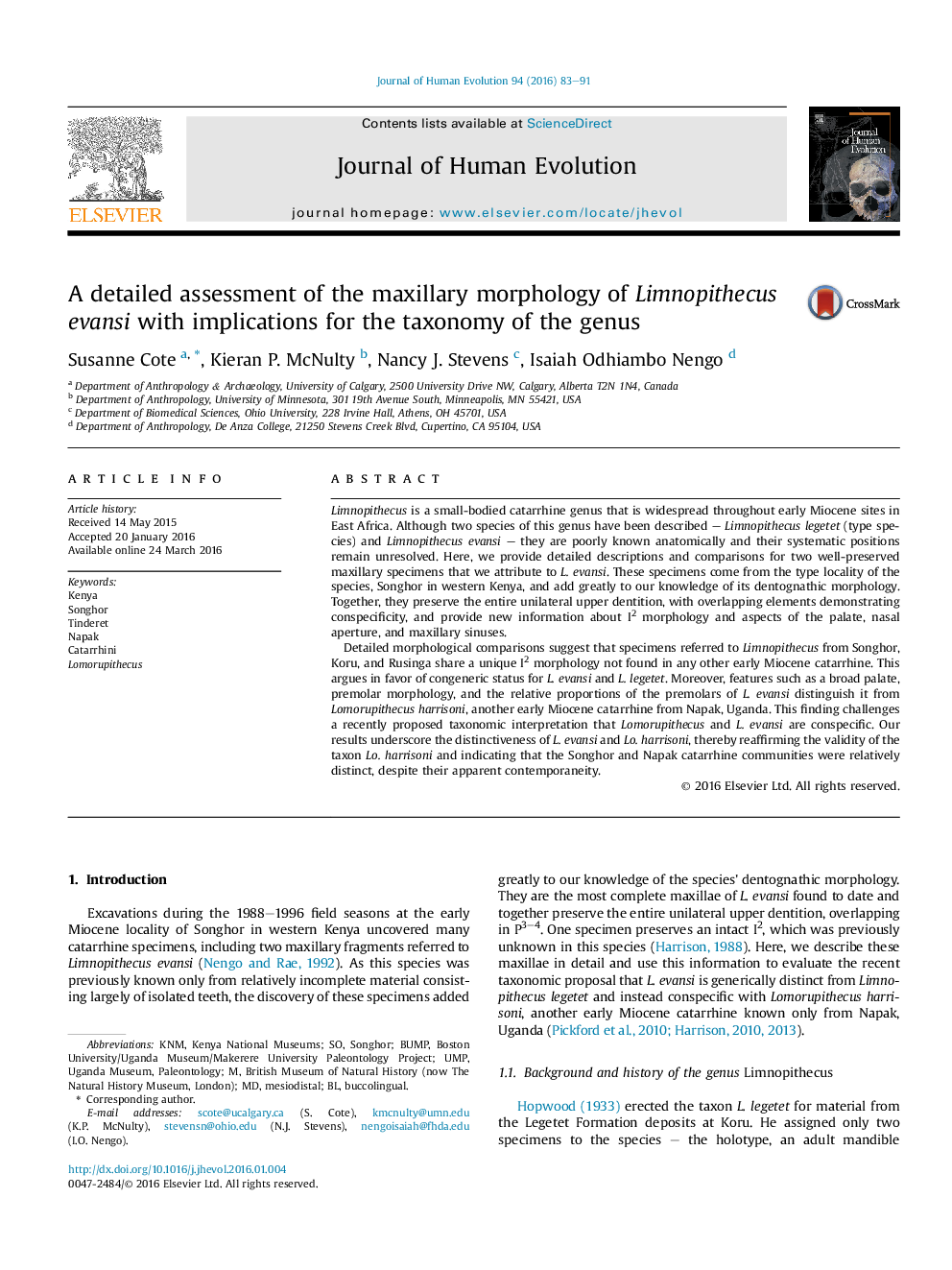| Article ID | Journal | Published Year | Pages | File Type |
|---|---|---|---|---|
| 6389100 | Journal of Human Evolution | 2016 | 9 Pages |
Limnopithecus is a small-bodied catarrhine genus that is widespread throughout early Miocene sites in East Africa. Although two species of this genus have been described - Limnopithecus legetet (type species) and Limnopithecus evansi - they are poorly known anatomically and their systematic positions remain unresolved. Here, we provide detailed descriptions and comparisons for two well-preserved maxillary specimens that we attribute to L. evansi. These specimens come from the type locality of the species, Songhor in western Kenya, and add greatly to our knowledge of its dentognathic morphology. Together, they preserve the entire unilateral upper dentition, with overlapping elements demonstrating conspecificity, and provide new information about I2 morphology and aspects of the palate, nasal aperture, and maxillary sinuses.Detailed morphological comparisons suggest that specimens referred to Limnopithecus from Songhor, Koru, and Rusinga share a unique I2 morphology not found in any other early Miocene catarrhine. This argues in favor of congeneric status for L. evansi and L. legetet. Moreover, features such as a broad palate, premolar morphology, and the relative proportions of the premolars of L. evansi distinguish it from Lomorupithecus harrisoni, another early Miocene catarrhine from Napak, Uganda. This finding challenges a recently proposed taxonomic interpretation that Lomorupithecus and L. evansi are conspecific. Our results underscore the distinctiveness of L. evansi and Lo. harrisoni, thereby reaffirming the validity of the taxon Lo. harrisoni and indicating that the Songhor and Napak catarrhine communities were relatively distinct, despite their apparent contemporaneity.
